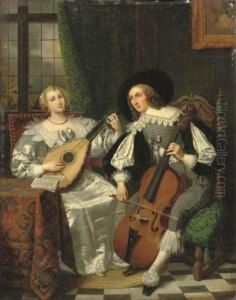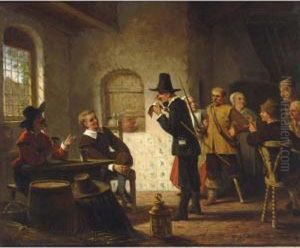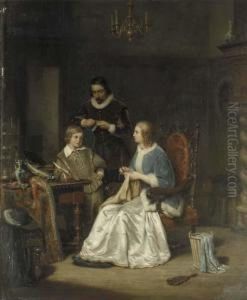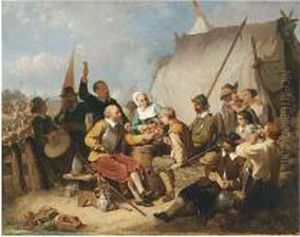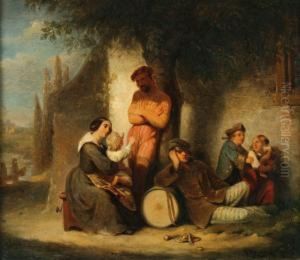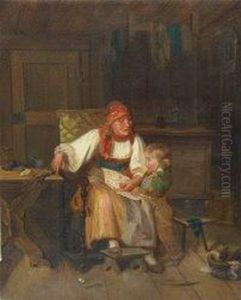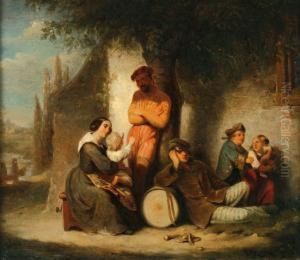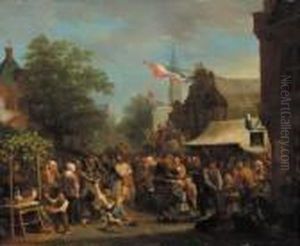David Iii Van Der Kellen Paintings
David III van der Kellen was a Dutch artist, engraver, and medalist born in 1827, in a period marked by significant cultural and artistic developments in Europe. He was part of a lineage of artists, with both his father, David II van der Kellen, and his grandfather, David I van der Kellen, being noted for their contributions to the arts, particularly in the field of engraving and medal making. This familial background provided him with a rich foundation in the traditional techniques and practices of engraving and numismatics, setting the stage for his future contributions to the field.
Van der Kellen's career is distinguished by his work as an engraver and a medalist, where he combined technical precision with artistic sensibility. His skills were not limited to traditional methods; he also embraced new technologies and methodologies of the 19th century, which allowed him to contribute significantly to the evolution of his craft. He served in various prestigious positions throughout his career, which underscored his reputation in the European art and numismatic circles. Among these roles was his contribution to the Royal Dutch Mint, where he was involved in the design and production of coins and medals, reflecting both the artistic trends and the technological advancements of his time.
Beyond his professional achievements, van der Kellen played a significant role in the cultural life of the Netherlands, contributing to the preservation and promotion of Dutch artistic heritage. His work reflects a deep engagement with the historical and cultural narratives of his country, often incorporating elements that celebrated Dutch history and achievements. He was also involved in educational initiatives, aiming to pass on his skills and knowledge to future generations, thereby ensuring the continuity of the artistic traditions he held dear.
David III van der Kellen's legacy is marked by his contributions to the fields of engraving and medal making, his role in the cultural and artistic institutions of the Netherlands, and his efforts in education and preservation of artistic heritage. He passed away in 1895, leaving behind a body of work that continues to be appreciated for its technical mastery and artistic depth. His life and work remain a significant part of the history of Dutch art, reflecting the broader trends of the 19th century while also showcasing the unique contributions of the van der Kellen family to the arts.
